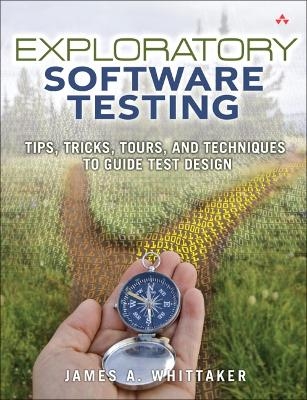
Exploratory Software Testing
Addison-Wesley Educational Publishers Inc (Verlag)
978-0-321-63641-6 (ISBN)
James Whittaker has spent his career in software testing and has left his mark on many aspects of the discipline. He was a pioneer in the field of model-based testing, where his Ph.D. dissertation from the University of Tennessee stands as a standard reference on the subject. His work in fault injection produced the highly acclaimed runtime fault injection tool Holodeck, and he was an early thought leader in security and penetration testing. He is also well regarded as a teacher and presenter, and has won numerous best paper and best presentation awards at international conferences. While a professor at Florida Tech, his teaching of software testing attracted dozens of sponsors from both industry and world governments, and his students were highly sought after for their depth of technical knowledge in testing. Dr. Whittaker is the author of How to Break Software and its series follow-ups How to Break Software Security (with Hugh Thompson) and How to Break Web Software (with Mike Andrews). After ten years as a professor, he joined Microsoft in 2006, and left in 2009 to join Google as the Director of Test Engineering for the Kirkland and Seattle offices. He lives in Woodinville, Washington, and is working toward a day when software just works.
Foreword by Alan Page xv Preface xvii Chapter 1 The Case for Software Quality 1 The Magic of Software 1 The Failure of Software 4 Conclusion 9 Exercises 9 Chapter 2 The Case for Manual Testing 11 The Origin of Software Bugs 11 Preventing and Detecting Bugs 12 Manual Testing 14 Conclusion 19 Exercises 20 Chapter 3 Exploratory Testing in the Small 21 So You Want to Test Software? 21 Testing Is About Varying Things 23 User Input 23 What You Need to Know About User Input 24 How to Test User Input 25 State 32 What You Need to Know About Software State 32 How to Test Software State 33 Code Paths 35 User Data 36 Environment 36 Conclusion 37 Exercises 38 Chapter 4 Exploratory Testing in the Large 39 Exploring Software 39 The Tourist Metaphor 41 “Touring” Tests 43 Tours of the Business District 45 Tours Through the Historical District 51 Tours Through the Entertainment District 52 Tours Through the Tourist District 55 Tours Through the Hotel District 58 Tours Through the Seedy District 60 Putting the Tours to Use 62 Conclusion 63 Exercises 64 Chapter 5 Hybrid Exploratory Testing Techniques 65 Scenarios and Exploration 65 Applying Scenario-Based Exploratory Testing 67 Introducing Variation Through Scenario Op
| Erscheint lt. Verlag | 10.9.2009 |
|---|---|
| Verlagsort | New Jersey |
| Sprache | englisch |
| Maße | 179 x 231 mm |
| Gewicht | 428 g |
| Themenwelt | Informatik ► Software Entwicklung ► Qualität / Testen |
| ISBN-10 | 0-321-63641-4 / 0321636414 |
| ISBN-13 | 978-0-321-63641-6 / 9780321636416 |
| Zustand | Neuware |
| Haben Sie eine Frage zum Produkt? |
aus dem Bereich


